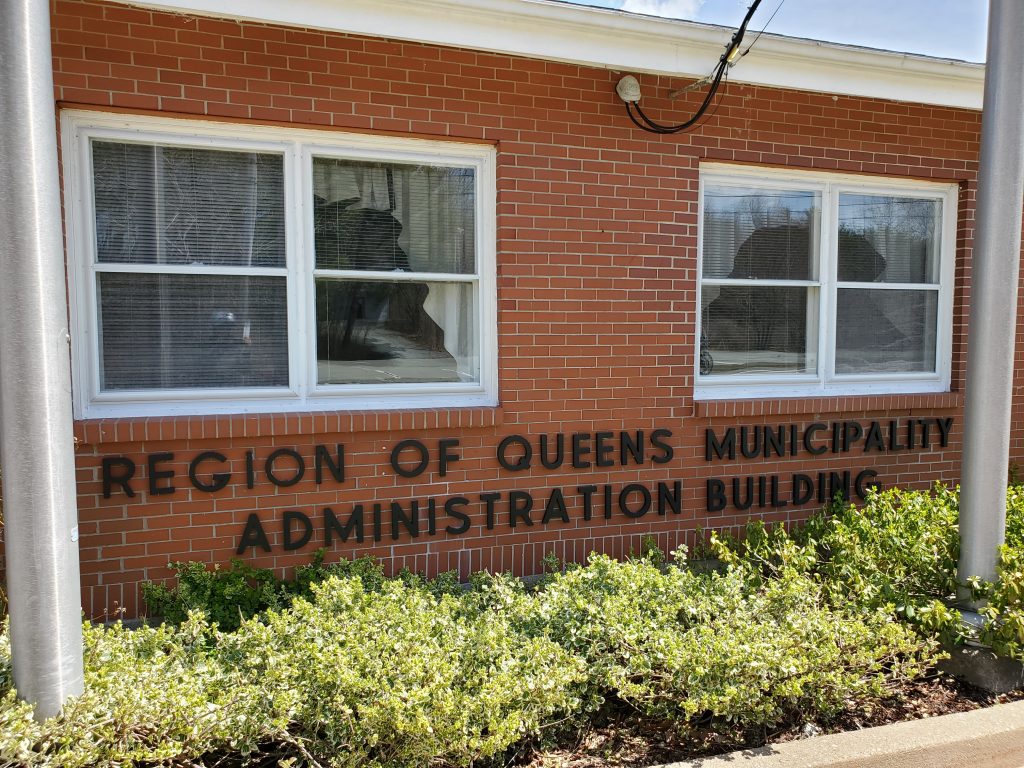Queens councillors seek changes to dry hydrant tenders after cost shocker

The dry hydrant at Bangs Falls pictured in early September, one of the photos of the condition of dry hydrants, posted by the Greenfield and District Fire Department. (Greenfield and District Fire Department)
A new dry hydrant will be installed behind the North Queens Nursing Home but at almost three times the cost that Region of Queens councillors were expecting.
The dry hydrant behind the manor in Caledonia has been on a list of planned work for the past five or six years, council heard at their meeting last week.
Councillors had budgeted $40,000 this year to install three new dry hydrants. The two others were planned for Mary Lake and Westfield Road, also in Caledonia.
But the one approved by council last week near the nursing home is the only one that will be installed this year, and at a cost of $40,000. The others will be pushed to next year, according to Garrett Chetwynd, the region’s manager of public works.
Chetwynd told councillors that staff decided to contract out the work because public works staff were busy with other projects.
“The original request for pricing was posted to the provincial procurement site where we received no responses. When we received no submissions to that, it was submitted to, I believe, 12 local contractors. So that same RFP was sent to them and we only received one submission back.”
That was from C. Eugene Ingram Construction in Liverpool, who will install for $40,000 plus HST.
Dry hydrants are used where traditional hydrants aren’t available. They access water sources such as ponds, lakes or streams to help fight fires. The municipality maintains 51 dry hydrants around the county.
District 6 Coun. Stewart Jenkins said he was concerned that one hydrant will cost so much. He asked how much it’s historically cost to install a dry hydrant, but Chetwynd said he was familiar with only one being installed during his time with the region and he didn’t have those numbers.
“I’m not against dry hydrants coming in,” Jenkins said. “I am against one hydrant costing what three was expected to cost.”
He said he’d like to see council combine dry hydrant maintenance and installation into one larger tender to attract more bids.
“If we as a region working with the fire departments came up with a plan of putting in new hydrants or fixing old ones and came up with a group of hydrants to have fixed, then we would get a tender because it would suddenly become a higher dollar value,” Jenkins told his fellow councillors.
“And I think if we had, you know, $150,000 worth of work out there or $200,000, we’d do it once every two years and fix up a whole bunch of things, it would make it more acceptable to get better quality quotes from the people that do this sort of work in Queens County.”
Deputy Mayor Maddie Charlton said bundling the work into a higher-value tender makes sense, especially if municipal staff can’t do it.
“We do have to try to make this more competitive for sustainability moving forward.”
Councillors voted to direct staff to compile a list of new dry hydrants requested to date and those in need of repair to attract more competitive bids for tender.
Some councillors were also concerned about delaying the work on the other two new hydrants to next year.
With the recent drought conditions in Nova Scotia, many of the water sources for the hydrants have literally dried up. The Greenfield and District Fire Department recently sounded the alarm about the condition of some of the hydrants in their area. According to a Sept. 1 Facebook post, the department has reported problems with dry hydrants to the region many times.
Councillors had set aside $110,820 in this year’s budget for maintenance and installation.
Jenkins said that while the dry hydrants provide handy access to water, the county’s volunteer fire departments have other ways of getting water to a fire scene.
“I know from experience with the fire departments that they do have other ways of getting water out of water sources than the dry hydrants. There’s portable pumps that are high volume. Many of the trucks have front intakes so they can pull into a site and pump water. So I don’t think it’s a fact that they’re not going to have water to that site. There’s other ways of doing it. And Greenfield (fire) department has had to lay out the other ways of doing it because half of their dry hydrants are very dry and the other ones are plugged up with mud.”
When asked, Chetwynd said he believes the work will likely begin in the next month, though he wasn’t sure exactly when or if the agreement dictates a timeline.
Email: rickconradqccr@gmail.com
Listen to the audio version of the story below














